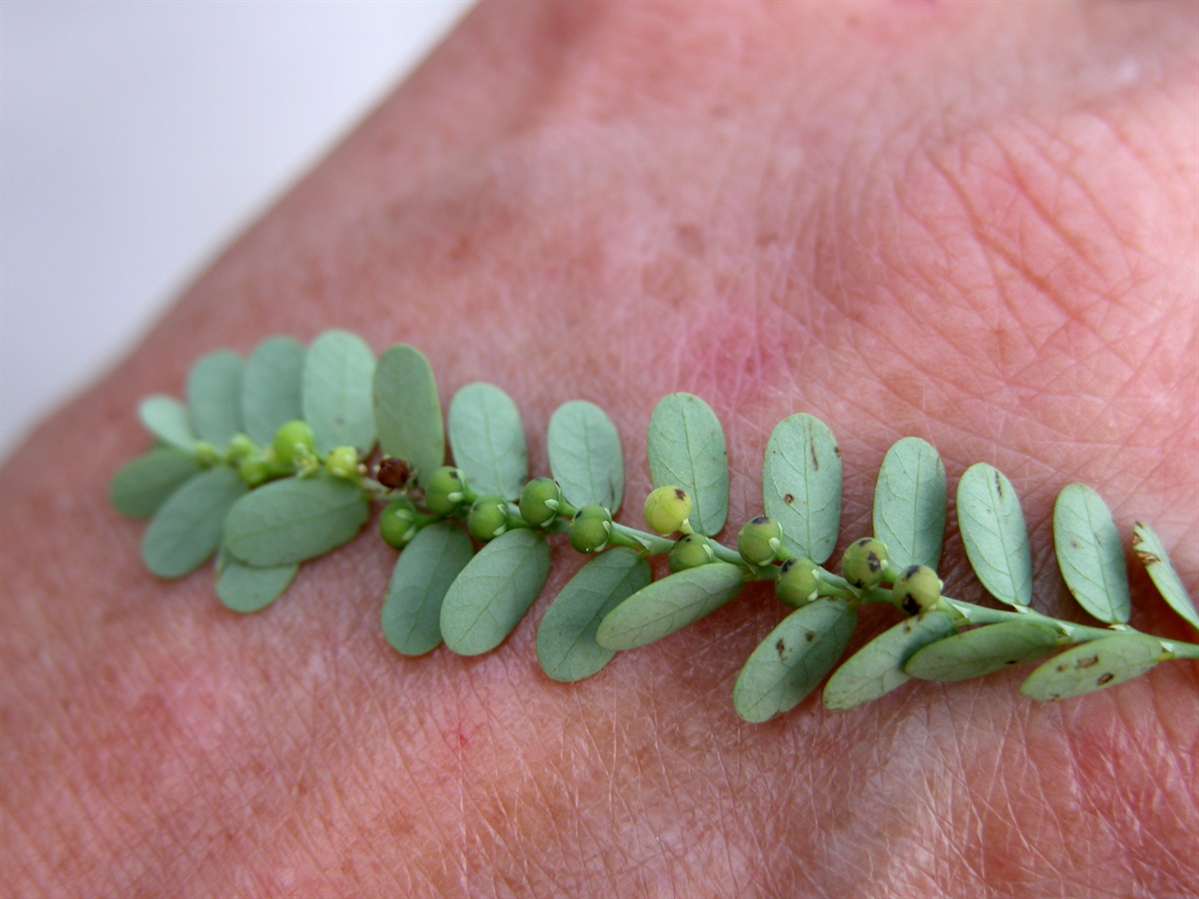Habit: Phyllanthus amarus grows as an annual herb to 50 cm in height. The stem has spirally arranged cataphylls each with a deltoid stipule. There are deciduous branches with alternate leaves. Each branch has 12-32 leaves. The leaves are elliptic to oblong, to 1.5 cm (usually smaller), with an entire margin and with a rounded or apiculate leaf apex.
Phyllanthus amarus is monoecious. The incomplete, imperfect, actinomorphic flowers are arranged in very small cymes that occur in the axils of leaves. The 1st and 2nd cymes nearest the man stem have only staminate flowers. The remaining cymes on the side branches have staminate and carpellate flowers. The staminate flowers have 5 or 6 fused sepals in the calyx and 3 stamens. Carpellate flowers have 5 or 6 fused. The ovary is superior. The fruit is a 3 lobed capsule.
Habitat: Phyllanthus amarus grows in Human Altered environments such as roadsides, yards, and fields.
Distribution: Phyllanthus amarus occurs on all island groupings in the Lucayan Archipelago as well as tropical and subtropical regions of the entire world. It was thought to be originally a western hemisphere species and has spread across the globe.
Medicinal/Cultural/Economic usage: Phyllanthus amarus is used for a variety of ailments in the Bahamas including gastrointestinal (appetite, cascading, gas, worms, diarrhea) colds and fevers (coughs), obstetrics (abortions) and gynecology (colic), circulatory (diabetes), pain (arthritis, backache) and general strengthening teas.

